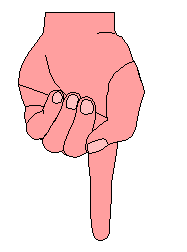|
STA
6166 UNIT 1 Section 1
|
| Welcome | < | Begin | < | Unit 1 | < | Section 1 | > | Section 1 Exercises | ||||
| Preliminary | All Sections in this course follow the same general structure. |
 |
|
Section 1
What is Statistics?
| Readings |
Ott and Longnecker, pages xi (Preface) to 38 (Chapters 1 and 2), |
| Instructor Guidance |
As you read the Preface and first two chapters, concentrate on picking out the answers to the questions below.
Introduction Many of the concepts discussed are covered very rapidly. Each section is typically covered by a full textbook or course so the coverage here is very superficial. The objective is simply to familiarize you with some of the basic terms used in statistics. "What is statistics?" Basically, statistics is an area of science concerned with the extraction of information from numerical data and its use in making inferences about a population from which the data are obtained. The term statistics also refers to summary measures, such as totals, averages or percentages of measurements, counts or ranks. It also refers to a collection of methods for obtaining, organizing, summarizing, presenting and analyzing numerical facts in order to help make wise decisions in the face of uncertainty. "Why should you study statistics?" The methods and procedures of statistics are at the foundation of much of modern scientific research. Statistical methods help you design your studies to assure that they efficiently address the study questions. Statistics provides a framework for thinking about hypothesis testing and decision making and shows how you can assign levels of confidence to the decisions or conclusions obtained through the data. |
| Optional Activities | None |
| Exercises | To check your understanding of the readings and practice these concepts and methods, go to Unit1 Section1 Exercises, do the exercises then check your answers from the page provided. Following this continue on to Section 2. |